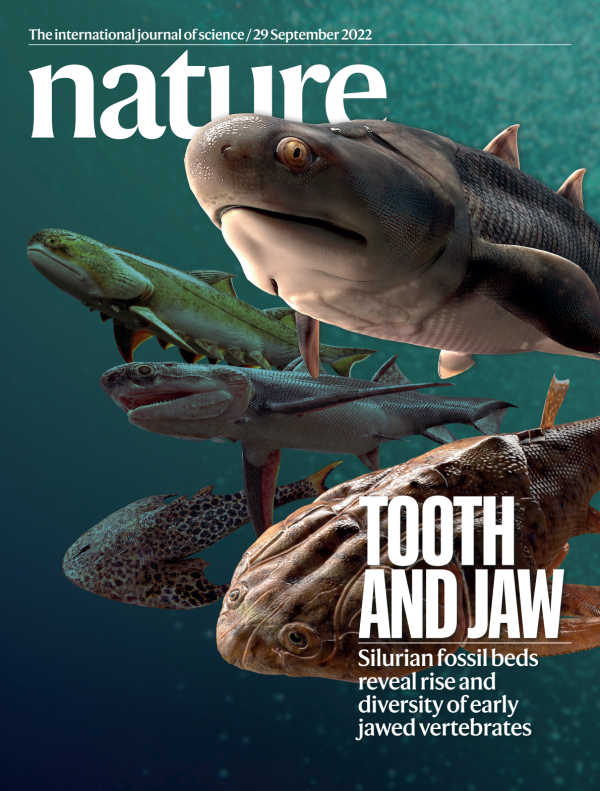The Rise of Fishes
Scientists from the Institute of Vertebrate Paleontology and Paleoanthropology (IVPP) of the Chinese Academy of Sciences have recently discovered two fossil repositories in the early Silurian strata in southwestern Chongqing and Guizhou, which are rewriting the evolutionary story of "from fish to human".
Their findings will be published on Nature on Sept. 28 this Wednesday in four articles in the same issue.
Among the extant vertebrates, 99.8% of species, including humans, are gnathostomes or jawed vertebrates. The basic body plan and several key organs of human can be traced back to the origin of gnathostomes. The rise of jaws is one of the biggest innovations in the history of vertebrates. However, how this innovation happened remains hidden in mist, mainly because fossils of early jawed vertebrates were only found in large numbers until the beginning of the Devonian (419 million years ago), while molecular data prove that the origin of jawed vertebrates should be earlier than ~450 million years ago. Hence, there is a huge gap in the fossil record of the early jawed vertebrates, spanning at least 30 million years from Late Ordovician through most of the Silurian.
The latest findings of ZHU Min’s team are unearthed from two new fossil depositories, shedding light on the rise of jawed vertebrates: These jawed fishes were already thriving in the waters of the South China block, at least 440 million years ago, and by late Silurian, more diverse and larger jawed fishes had evolved and began to spread around the world, opening the saga of fish landing and our humans eventually evolved.
Discoveries of fish fossils from the two depositories help to trace many human body structures back to ancient fishes, some 440 million years ago, and fill some key gaps in the evolution of "from fish to human", and provide further iron evidence to the evolutionary path.
The Chongqing fish fossil depository in the Upper Red Beds of the Silurian system dates back to 436 million years ago. It is world’s only early Silurian Lagerstatte (fossil depository with exceptional preservation) which preserves complete, head-to-tail jawed fishes, providing a peerless chance to peek into the proliferating "dawn of fishes". This fossil “treasure hoard” stands among other great Chinese Lagerstatten: Chengjiang Biota and the Jehol Biota, all provide key jigsaw puzzles previously missing in the tree of life.

Download attachments: